How to Implement a Coffee Shop Inventory Management System?
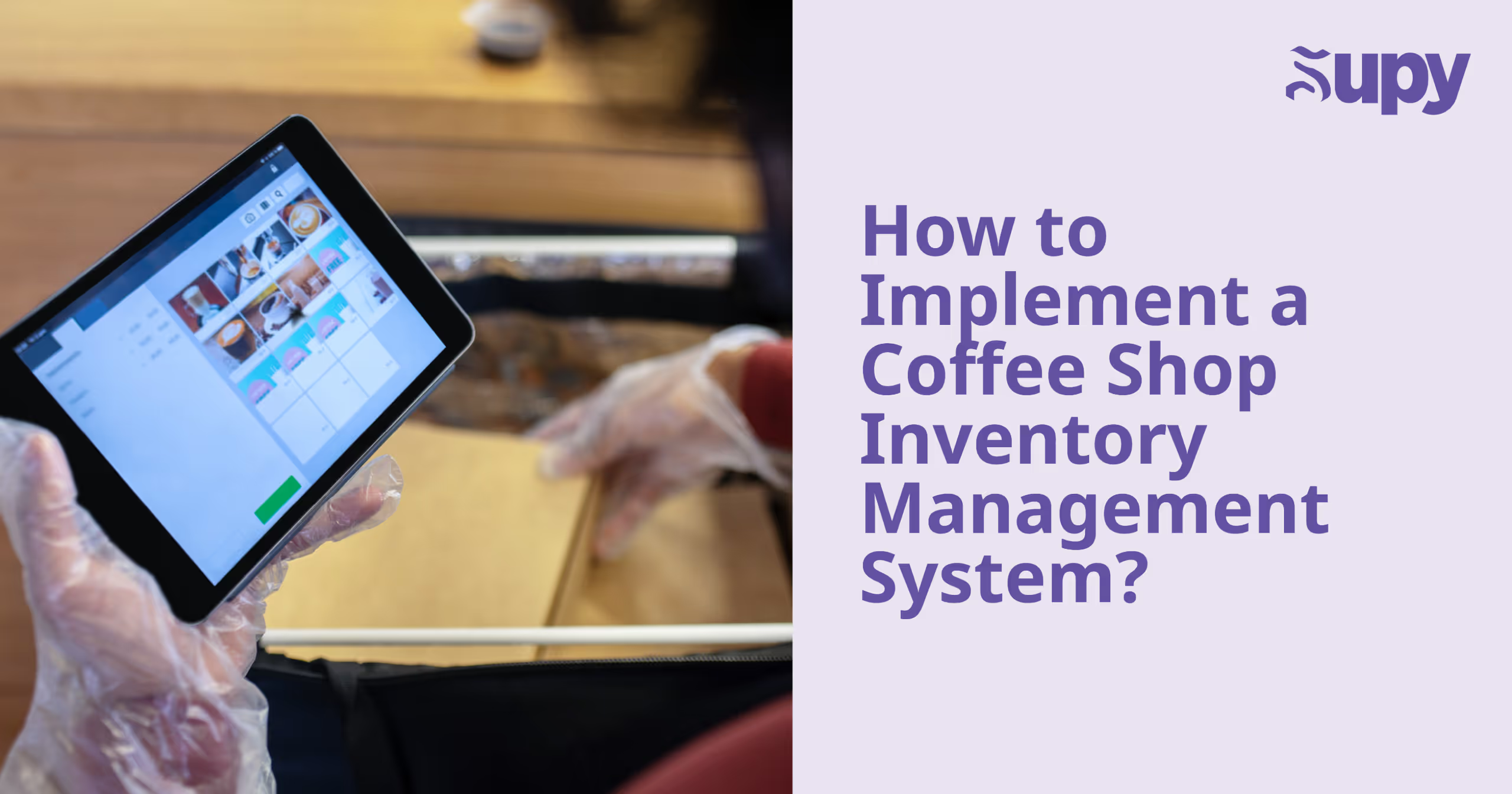
The coffee shop industry thrives worldwide, with remarkable growth all around. In the US alone, the industry saw a 3.8% increase in 2024, bringing the total number of Coffee & Snack Shops to 78,851. While this growth highlights expanding opportunities, it also increases the need for efficient operations, particularly when it comes to managing inventory.
Inventory management in coffee shops comes with unique challenges. Owners must carefully handle perishable goods like milk and baked items, stock specialty ingredients for unique menu offerings, and keep up with high-turnover items like coffee beans and takeaway cups. Without a proper system, these demands can lead to overstocking, waste, or running out of critical supplies at the wrong time.
A well-organized inventory management system provides practical solutions to these challenges, streamlining operations and enhancing efficiency. Let’s see how you can implement an inventory management system and align it seamlessly with your existing operations.
- Step 1: Evaluate Your Coffee Shop’s Inventory Needs
- Step 2: Choose the Right Inventory Management Software
- Step 3: Set Up and Organize Your Inventory
- Step 4: Train Your Team for Success
- Step 5: Monitor and Analyze Inventory Data
- Real-Life Example: How The Coffee Address Solved Inventory Challenges
- Additional Tips for Effective Coffee Shop Inventory Management
- Conclusion: Take Control of Your Inventory
- About Supy
1. Step 1: Evaluate Your Coffee Shop’s Inventory Needs
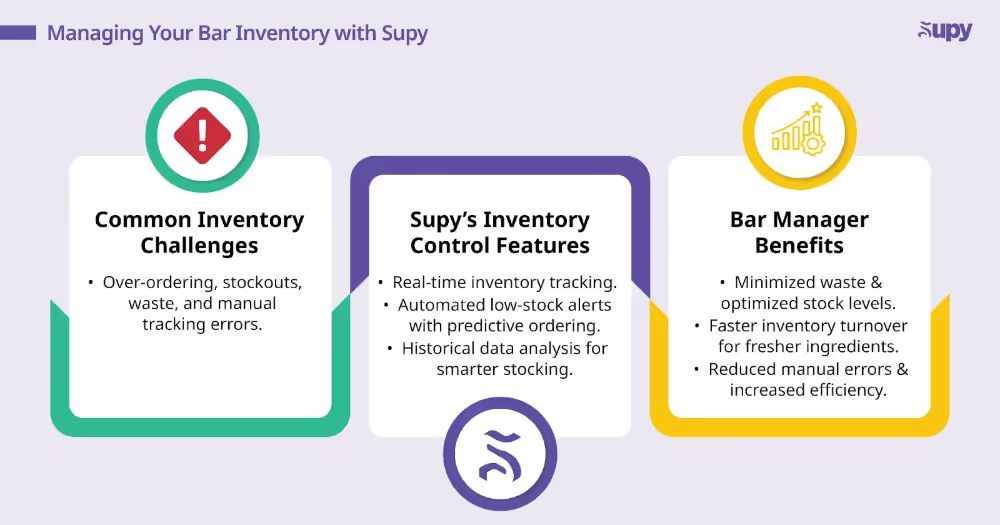
2. Step 2: Choose the Right Inventory Management Software
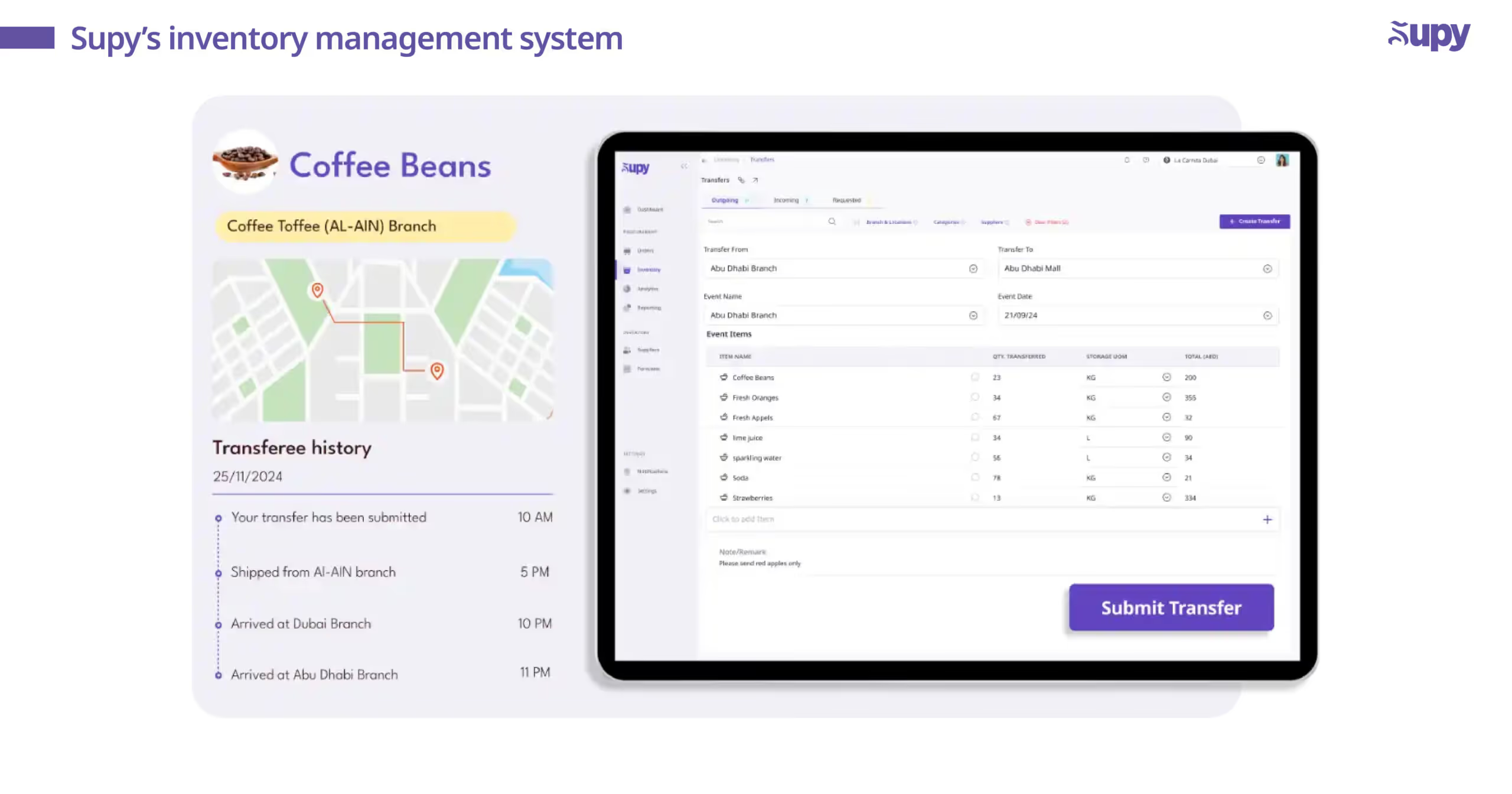
Once you have clear objectives for your inventory needs, it’s time to select the software that best supports your coffee shop operations. The right tool simplifies inventory tracking, reduces manual work, and helps you manage your stock more effectively. Choosing software with the right features can make a significant difference in optimizing your day-to-day processes.
Key features of inventory management software include:
- Real-Time Tracking: Keep an updated view of your stock levels to avoid running out of essentials or overordering.
- Mobile Accessibility: Access inventory data anytime on a user friendly interface, allowing you to make quick decisions even when you’re not on-site.
- Integration with POS Systems: Automatically sync sales data with inventory to maintain accurate stock records without extra effort.
- Stock Alerts: Receive notifications when stock levels are low or items are nearing expiration.
- Supplier Management: Organize and manage supplier orders within the system to streamline restocking.
- Analytics and Reporting: Use data insights to understand sales trends, optimize stock levels, and reduce waste.
Supy’s inventory management system is built with coffee shop operations in mind. It offers real-time tracking, stock alerts tailored to your specific needs, and seamless integration with POS systems. With Supy, managing inventory becomes simpler, saving you time and resources to focus on growing your business and serving your customers.
3. Step 3: Set Up and Organize Your Inventory
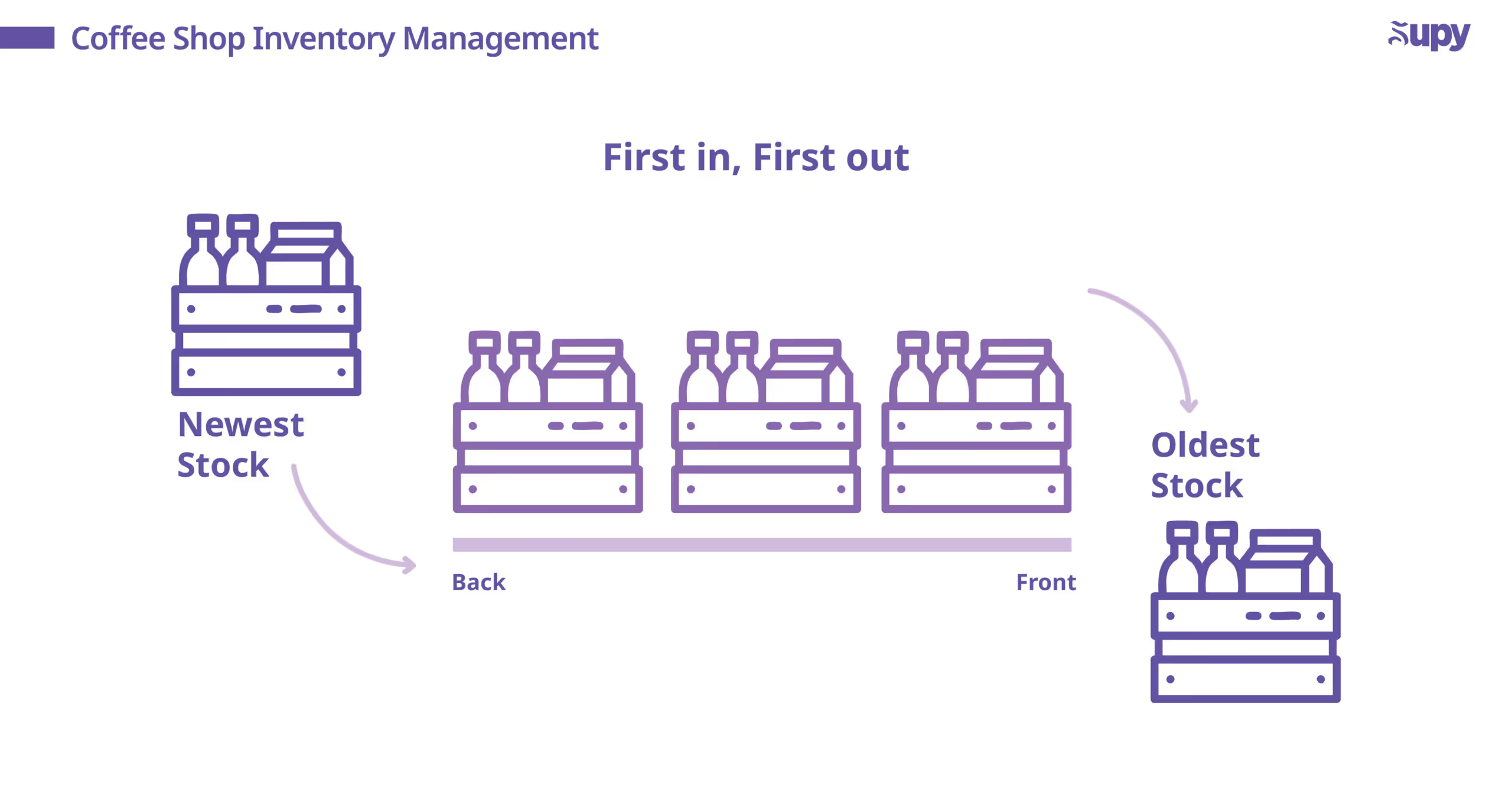
To set up the system, you need to organize your inventory in a way that simplifies tracking and management. Start by labeling each item with barcodes or QR codes, enabling barcode scanning for quick and accurate updates during stock counts or when logging new deliveries. Use shelving or storage bins that align with the inventory categories you’ve created, such as coffee beans, syrups, and dairy products. Clear organization saves time during busy hours and helps prevent misplaced items or ordering errors.
For perishable items like milk, cream, and baked goods, implement the First-In, First-Out (FIFO) method. Arrange newer stock behind older items so that the oldest inventory is used first, and monitor expiration dates closely to avoid waste. This approach minimizes spoilage, ensures freshness, and keeps costs under control. Combining clear labeling with effective stock rotation ensures your inventory remains organized, accessible, and aligned with your business needs.
4. Step 4: Train Your Team for Success
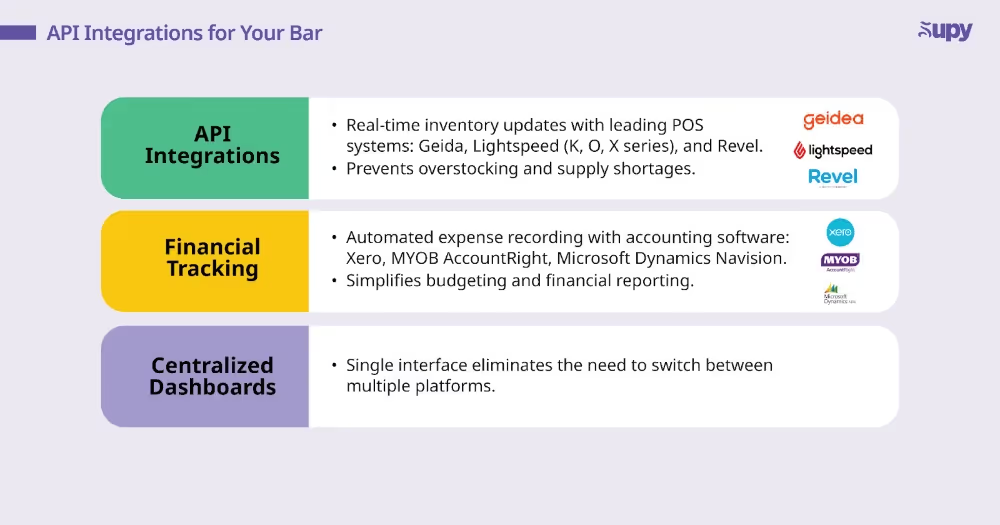
Your inventory system is only as effective as the people using it. While investing in the right software matters, the time you invest in training your team is just as important. Staff should be comfortable with stock counting, logging deliveries, and managing ingredients to reduce waste. Hands-on training, clear instructions, and quick-reference guides help ensure consistency, even during busy shifts.
The leadership will primarily monitor the software, but the staff will be using it daily for reviewing recipes, tracking stock, or updating inventory. A well-trained team paired with strong leadership creates a reliable framework for effective inventory management in your coffee shop.
We really liked [Name]'s take on software investment in our podcast, whether it’s for a restaurant, coffee shop, or any back-of-house F&B operation.
https://www.youtube.com/shorts/-X9Xlt1aN5w
5. Step 5: Monitor and Analyze Inventory Data
A data-driven software helps you bring insights, but the decision-making is still in your hands. How you use those insights determines your success. Regular audits ensure physical stock matches system records, catching errors early and reducing shrinkage. This also fosters accountability, preventing over-ordering and waste.
Analyzing reports provides real-time visibility into stock performance. Identify overstocked items that tie up capital and underperforming products that do not sell. Adjust purchasing to match demand, prioritizing high-turnover and seasonal items. This data-driven approach helps in controlling food costs, optimizing inventory, and keeping your coffee shop efficient and profitable.
6. Real-Life Example: How The Coffee Address Solved Inventory Challenges
The Coffee Address, Saudi Arabia’s leading coffee chain is celebrated for its specialty coffee, exceptional customer service, and visually stunning stores. With over 140 branches across the kingdom, the brand offers in-store experiences and sells freshly roasted beans through its online store.
Despite its success, The Coffee Address faced significant inventory challenges that impacted both profitability and operational efficiency:
- Discrepancies between actual stock and theoretical stock, lead to food waste and lost revenue.
- Lack of employee productivity and task mismanagement, resulting from inadequate tools and unclear priorities.
- Absence of real-time analytics, delaying critical inventory and menu-related decisions and reducing overall responsiveness.
To address these issues, The Coffee Address adopted Supy’s inventory management software, which offered advanced features tailored to their needs. Automated daily reminders for stock counts helped reduce food waste by prioritizing high-demand items and keeping account of inventory discrepancies. The seamless integration with Foodics POS provided real-time syncing of sales data with inventory levels, making tracking and adjustments more efficient.
With this system, they ultimately achieved greater inventory accuracy, faster internal ordering processes, and improved task management. Supy’s mobile-friendly tools and real-time analytics added value by supporting better menu planning, food cost optimization, and streamlined stock handling, enabling The Coffee Address to enhance both profitability and operational efficiency across its multiple locations.
7. Additional Tips for Effective Coffee Shop Inventory Management

Effective inventory management goes beyond the basics. Here are a few tips to enhance your inventory processes:
Set Par Levels for High-Demand Items
Establishing par levels (minimum and maximum stock levels) for essential items like coffee beans, milk, and syrups can help avoid stockouts during busy hours. Regularly review sales data to adjust these levels based on demand trends. For instance, during peak seasons, you may need to increase par levels to meet higher customer traffic. Par levels ensure you always have the right amount of stock on hand without over-ordering.
Collaborate Closely with Suppliers
Strong supplier relationships are vital for a reliable inventory system, and optimizing procurement can be quite beneficial. Procurement tools streamline purchase orders, track deliveries, and align inventory with actual demand through real-time updates. Sharing sales data and forecasts with suppliers ensures timely deliveries, reduces the risk of stockouts, and helps negotiate better terms like bulk discounts. This efficient and collaborative approach improves inventory accuracy, minimizes delays, and supports cost-effective operations for your coffee shop.
Implement Batch Tracking for Perishables
Tracking perishables like milk and baked goods by batches ensures you use items before they expire. Use your inventory system to log arrival dates and monitor the shelf life for each batch. This helps you rotate stock efficiently, minimizing waste and ensuring customers always receive fresh products. Batch tracking also provides insights into shelf-life trends, helping you plan orders more effectively.
Optimize Inventory for Seasonal Menus
If your coffee shop features seasonal menus, plan inventory around these changes to avoid overstocking or shortages. Analyze previous sales data for seasonal items to forecast demand more accurately. For example, order extra supplies of pumpkin spice syrup during fall while scaling back on items less popular during that period. Optimizing your stock for seasonal variations allows you to meet customer expectations while maintaining cost efficiency.
8. Conclusion: Take Control of Your Inventory
Effective inventory management is a vital part of running a successful coffee shop, helping you streamline operations, reduce waste, and boost profitability. Start small by making incremental changes, such as organizing your stock and setting clear par levels for essential items.
Using the right tools, like inventory management software, allows you to make informed decisions and optimize processes over time. Focus on continuous improvement and collaboration with your team and suppliers to turn inventory management into a strategic advantage for your business.
9. About Supy
Supy is built to address the unique challenges of inventory management in coffee shops and F&B businesses. It helps improve order accuracy, streamline stock tracking, and make daily operations more efficient. Book a demo today to discover how Supy can add value to your business.
Related Resources







